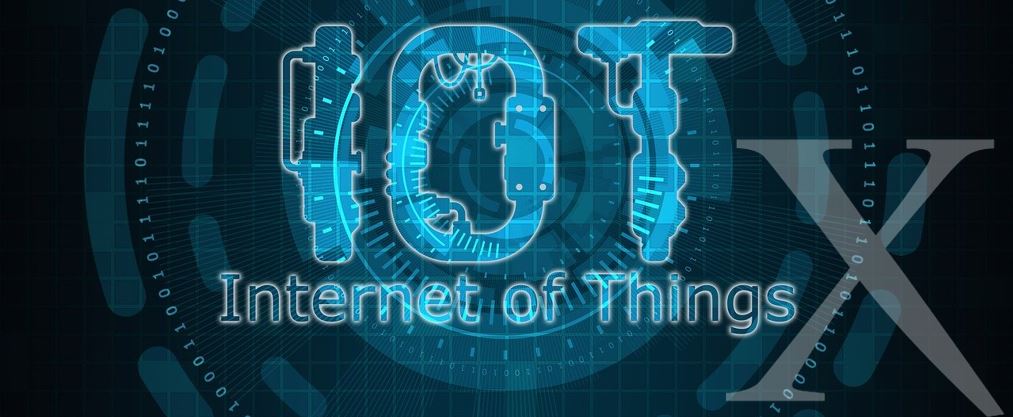
IoT has become a buzzword in recent years. It stands for the Internet of Things. Despite the hype, many predictions have only proven fanciful. In truth, there are several potential applications. However, IoT has been a runaway success at complementing the functionality of business management software. It has also radically altered the entire approach of many companies doing business.
Several studies shows a distinct lack of integration between IoT and ERP (Enterprise Resource Planning) systems. This has a net negative impact on the readiness of companies to implement digital transformation. Only 16 percent of companies use IoT data in their ERP software.
In many companies, digital transformation is growing in leaps and bounds for many obvious reasons such as gains in optimizing resources, enhanced business processes, and reduced costs. But unlike the industrial sector, they are discovering their legacy systems to be inadequate as they migrate to more intelligent systems.
Most industrial companies disengage data from strategic decision-making and operations and connected devices. This tones down IoT’s digital transformation potential.
One must also consider how ERP, EAM (Enterprise Asset Management), and FSM (Field Service Management) software efficiently prepare industrial companies to utilize IoT data in their enterprise software and for digital transformation in general.
Getting it right will mean big operational, cost and revenue benefits for industrial manufacturers; and great business for providers.
IoT in manufacturing (especially in operations and supply chain processes) is projected to drive significant growth in the next few years.
By 2024, IoT in manufacturing is forecast to exceed $150 billion, according to a Global Market Insights news report. It said there is huge potential for the technology to improve visibility across industrial operations by gleaning insights into every stage of production and supply chain process in real time.
It continues by saying that virtually tracking firm assets, products, operations, processes, and several other resources offers businesses absolute visibility leading to a streamlined process and optimized industrial demand and supply. The rising demand for improvising operational efficiency accompanied by reduction in costs associated with various manufacturing processes is expected to give wings in IoT manufacturing market growth.
Improving Availability of Data
ERP is central to the business of most companies. It offers a robust central source of data. The Internet of Things is capable of greatly increasing the availability of data across all functional units. It also vouches for the accuracy of the data involved.
This has significant ramifications for enhancing ERP in areas such as forecasting, customer service, inventory and asset management, and business intelligence.
IoT has made significant impact in manufacturing. For example, the sensors linked to equipment offer a greater level of maintenance automation, ensuring vital access to data to those dependent on it. This includes anyone from shop technicians to decision makers in the corporate suite.
Enhance Communication
The usual thing is that in the event a manufacturer sells to a customer directly, the service module of the ERP system is updated with customer information for each unique serial number. This is often done at the time of shipment. But, when products are sold through dealers, it is more difficult to obtain the resulting end-user data.
IoT makes it possible for a product to communicate directly with the manufacturer from when it leaves the warehouse. As a result, engineering and service departments can obtain a goldmine of relevant information.
A number of ERP systems offer vendors and customers access to portals where they can directly access and confirm orders, along with the ability to register updates. They may also register any challenges, promoting better communication and service. When IoT-enabled products talk directly with an ERP system, the connection to suppliers and customers becomes more close-knit. This diminishes the possibility of wastage and errors and a much leaner supply chain overall.
Inventory management is another area that benefits when products can communicate directly with an ERP system. Updating on-hand values in real-time gives manufacturers the ability to manage inventory located in third-party logistics warehouses or consigned inventory. Rather than depending on a worker in the particular warehouse to report inventory levels, manufacturers are able to receive consistent and accurate data.
Improve Business Intelligence
Businesses are now able to monitor machine operations in any location of the world and carry out real-time analysis of streaming data. Apart from managing equipment maintenance, the IoT makes social analytics and a more direct customer engagement possible. Such instant availability of accurate business intelligence (BI) helps managers make superior tactical decisions.
Using IoT sensors and devices, re-orders, replenishment, and Kanbans can be immediately relayed to the ERP system without any part of the process being manual.
Vast amounts of data can be captured, enabling the ERP system to generate intelligent recommendations for factory floor and supply chain managers using machine learning applications.
ERP and IoT to Multiply Revenue Growth
Manufacturers are continually finding new insights to improve supply chain and production efficiency. They also actively seek to enhance growth and excel at product quality. IoT software, systems, and technologies continue to make inroads into all disciplines of manufacturing to meet manufacturers’ increasingly complex real-time monitoring needs.
Manufacturers also embrace ERP systems, modules, and entire platforms to strengthen their businesses for scale in global competition. The unflinching rise of analytics, Business Intelligence (BI), and Manufacturing Intelligence indicates how committed manufacturers are to gaining new insights to improve quality, drive greater growth, and excel as a supplier.
Globally, the manufacturing industry is the most prolific at producing data. IoT systems constituting sensors, applications, and platforms to aggregate, analyze, and present real-time data is central to driving the global data output of manufacturing to much more than a projected 2,000 Petabytes in 2019.
IoT is a catalyst for manufacturing growth
Gaining valuable fresh insights into every step in production, fulfillment, the supply chain, and installation and service processes is highly desirable. So is processing how exactly each contributes to or subtracts from the total product quality, and delivering enviable customer service.
Manufacturers are employing results-driven ingenuity in adopting IoT. Many manufacturers commence an IoT pilot to gain real-time monitoring into key areas of their production operations. In the course of the pilot, IT teams assess several means to integrate IoT sensor-based data, applications, and platforms into their current IT infrastructure including their ERP systems.
A larger manufacturer has the multiplied probability that they’ve grown through acquisitions and mergers, meaning there is the necessity to integrate new ERP and IT systems into the company-wide IT apparatus. Many of the IoT application, systems, and platform providers are offering extensive API (Application Program Interface) support and Web Services support making integration with current systems faster and more affordable. This is a welcome development, as APIs and Web Services have eliminated the need to create hand-coded adapters and the connectors vital to support new technologies.
Measuring IoT Success in Manufacturing
IoT and manufacturing have become quite inseparable in recent times. There are five important metrics used in IoT pilots to improve operations, quality of data, give ample incentive to revenue growth and strengthen product quality:
- Manufacturing cycle time.
- Overall equipment effectiveness (OEE).
- Production yield rates by product, process, and plant location.
- Perfect order performance.
- RMA (Return Material Authorization) rate and percentage of manufacturing.
Conclusion
IoT solutions continue to provide numerous emerging opportunities to extend and augment business management systems. Fresh data sources and increased volumes from existing sources can deliver greater insights to decision-makers at all levels within an organization. ERP systems should have the ability to collect data, process it, analyze, and utilize this data in an efficient way.
Modern-day ERP systems, like Infor CloudSuite Industrial (SyteLine) can take advantage of powerful, secure, and easy to scale cloud platforms. On the basis of these platforms, the cloud-based IoT package can be swiftly deployed in an efficient manner via easy-to-adapt preconfigured solutions for stream analytics, remote monitoring, predictive maintenance, and stream analytics, permitting businesses to rapidly arrive at proof of concept and scale to production.



